The highs and lows of being a real Sonic fan
Suffice to say it hasn't been easy...
"Loving you / is easy cos you're blue and cool..."
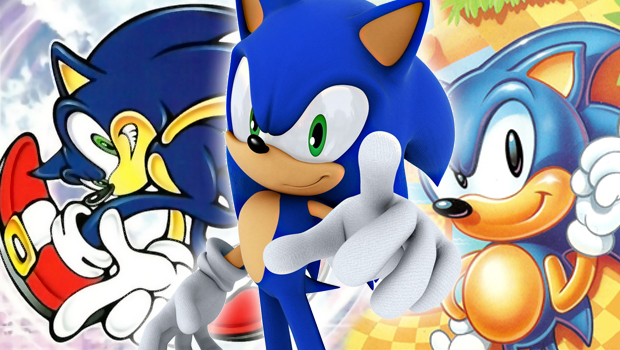
With our Sonic Lost World review going live tomorrow and so many Sonic fans' hopes riding on this new Sega/Nintendo collaboration, we thought it would be time to look back at Sonic's history from the perspective of a Sonic fan. Yes, me.
I can still remember it really clearly. The boy in my class at school saying at lunchtime Have you heard of Sonic the Hedgehog? to which I replied No. Hes blue and he runs really fast, he said, doing a little 'running' motion on the words 'runs really'. I can still hear him say it. Fast to rhyme with gassed, not arsed. But there it was. The seed was planted in my mind. This Sonic sounded cool. And so began 21 years that started easy, grew frustrating and veered into dejection. And some way back again. So let's see how the hog that could do no wrong in the eyes of a 9-year-old boy developed as that same boy grew up. I've even made a little graphic for each slide to show how easy or hard it was to be a Sonic fan in each year. Ready? Let's do this...
1991: Sonic the Hedgehog was released
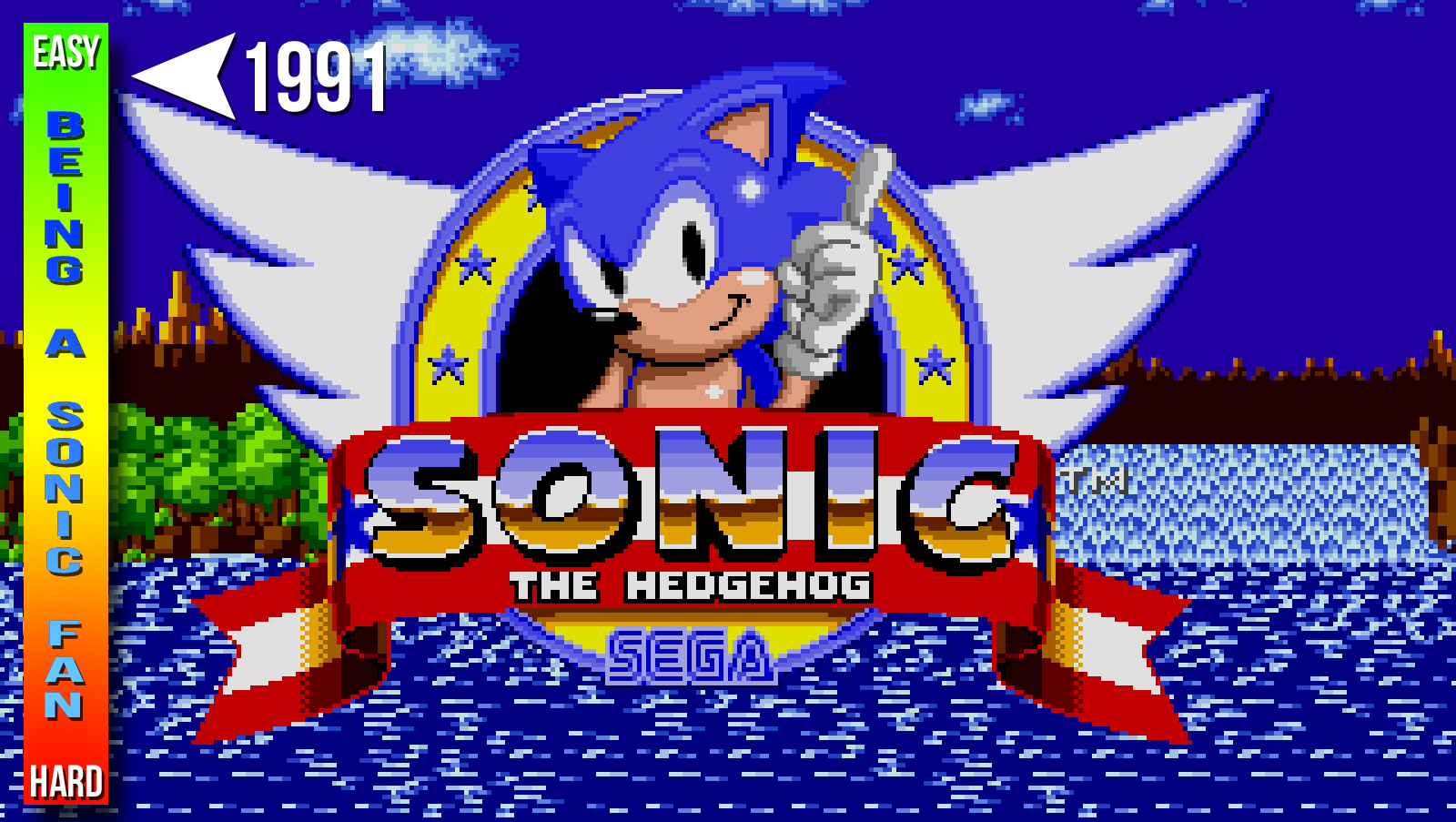
I was a Sonic 1 fan before Id even played the game. Ive said on GamesRadar before that my sister and I would stand in Taunton Toys (our local toy shop) and watch the Mega Drive demo roll around. Wed gasp in awe at the cascade of rings when he dropped them in the Marble Zone demo and laugh when he popped up from the title screen barrel and waggled his finger. It was like nothing we'd ever seen before. Yet demo pods always had the control pads unplugged, leaving 16-bit Sonic always so near, yet so far.
When I finally got to play it, it was everything Id built it up in my mind to be, which made playground arguments extremely easy to win. Sonic was faster than Mario, looked way better than Mario (even when SNES did finally get released in Europe) and Sonic was a more exciting character. Whereas Mario was a fat plumber, Sonic was a razor-spined rodent who could break the sound barrier and curled up into a ball to ping off bumpers like a pinball. There was simply no contest.
1992
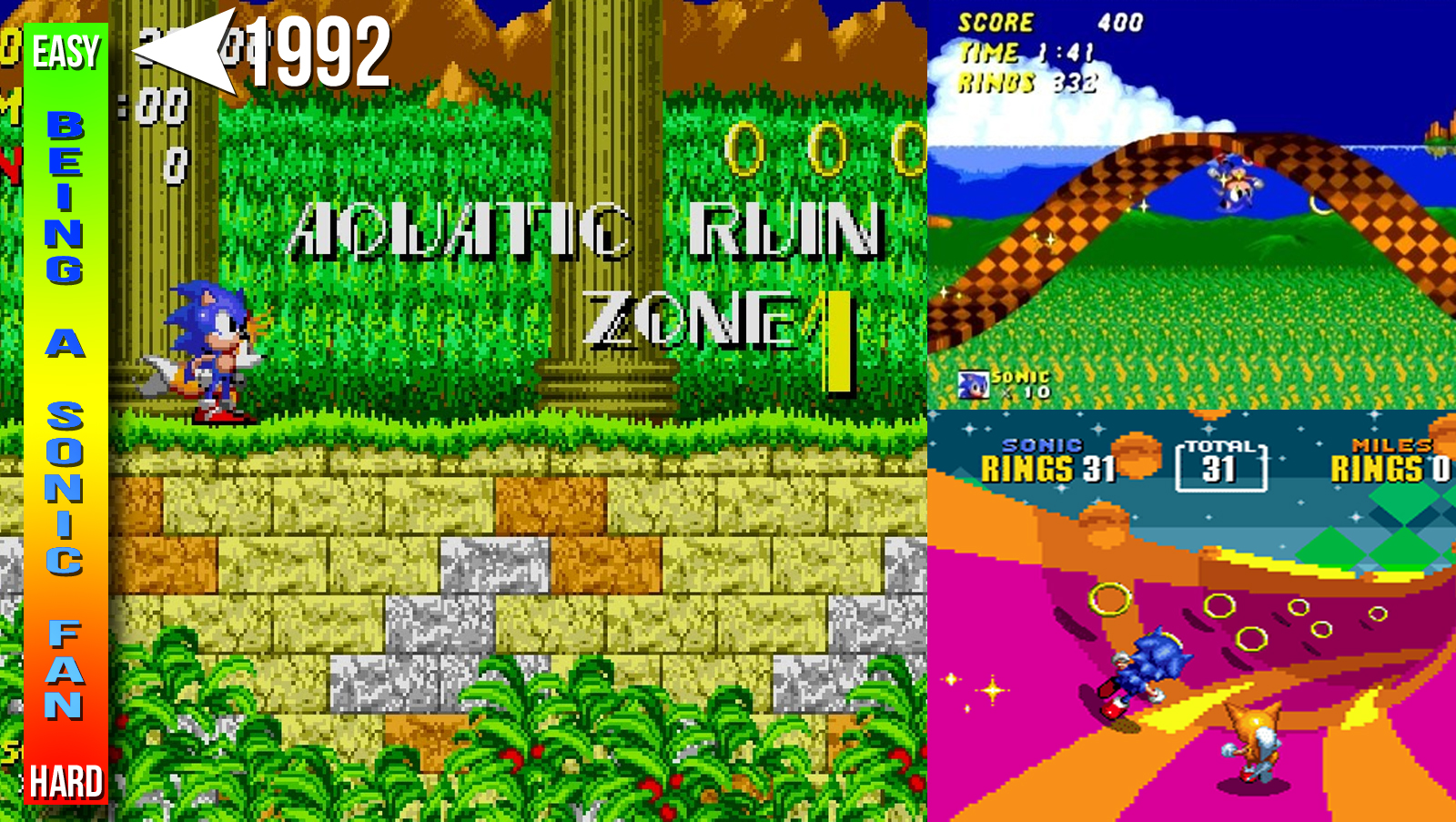
Sonic 2 was released, offering a much more mainstream-feeling gameplay experience than Sonic 1. It had a greater variety of levels (all of which looked incredible), an exciting new move--the spin dash--and the ability to run upside-down through a pseudo-3D corkscrew if you had built up enough speed. Chuck in an into-the-screen 3D effect-laden special stage and you were looking at THE game to play on Christmas Day, 1992. Which is exactly what I did.
Looking back at the Aquatic Ruin zone now, its hard to believe these graphics ever looked incredible, but they did. Seeing occasional flashes of the game on TV was so exciting. Sonic broke those massive stone pillars, the foliage was multi-layered parallax it was incredible.
1993
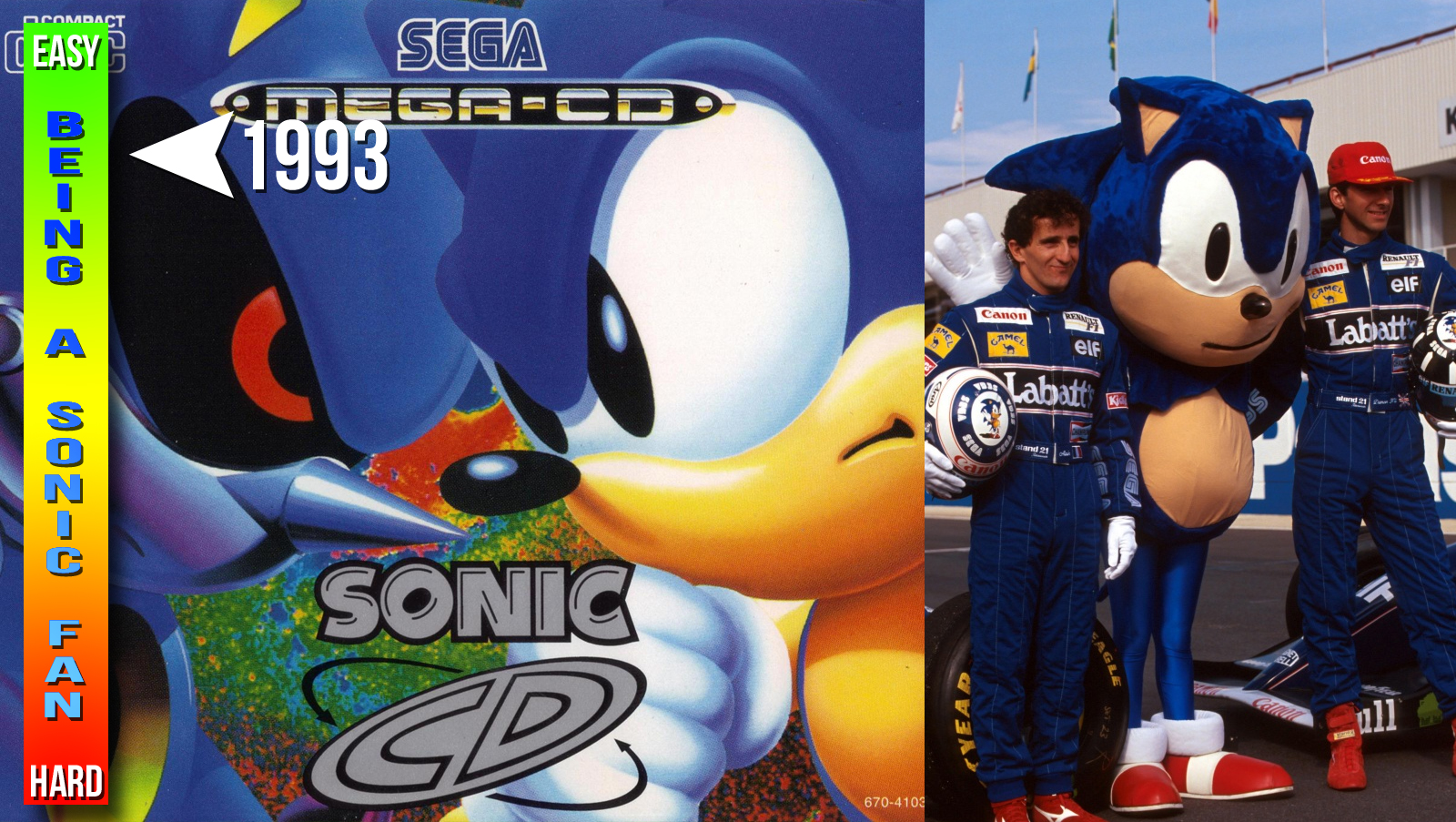
1993 was a strange year for Sonic. There was no numbered sequel, but he did make his first 'next-gen' appearance on Mega CD in the shape of Sonic CD. I didn't play it because, like everyone else in the world, I hadn't bought a Mega CD. Because it was over-expensive and a bit pap, really. Still, it did have a rival technology to Nintendo's Mode 7, so that was a bonus.
Weekly digests, tales from the communities you love, and more
Sonic himself could still do no wrong, as he hadn't appeared in very many games yet, and all had been great. He was a balloon in the Thanksgiving parade and made it onto the Williams Formula One team's cars. There was even a decal sticker that suggested Prost and Hill's feet were, in fact, Sonic's feet. Awesome. Sonic was associated with speed and with winning, as Prost claimed his fourth title, this time powered by Sega. Well, and Renault, obviously.
1994
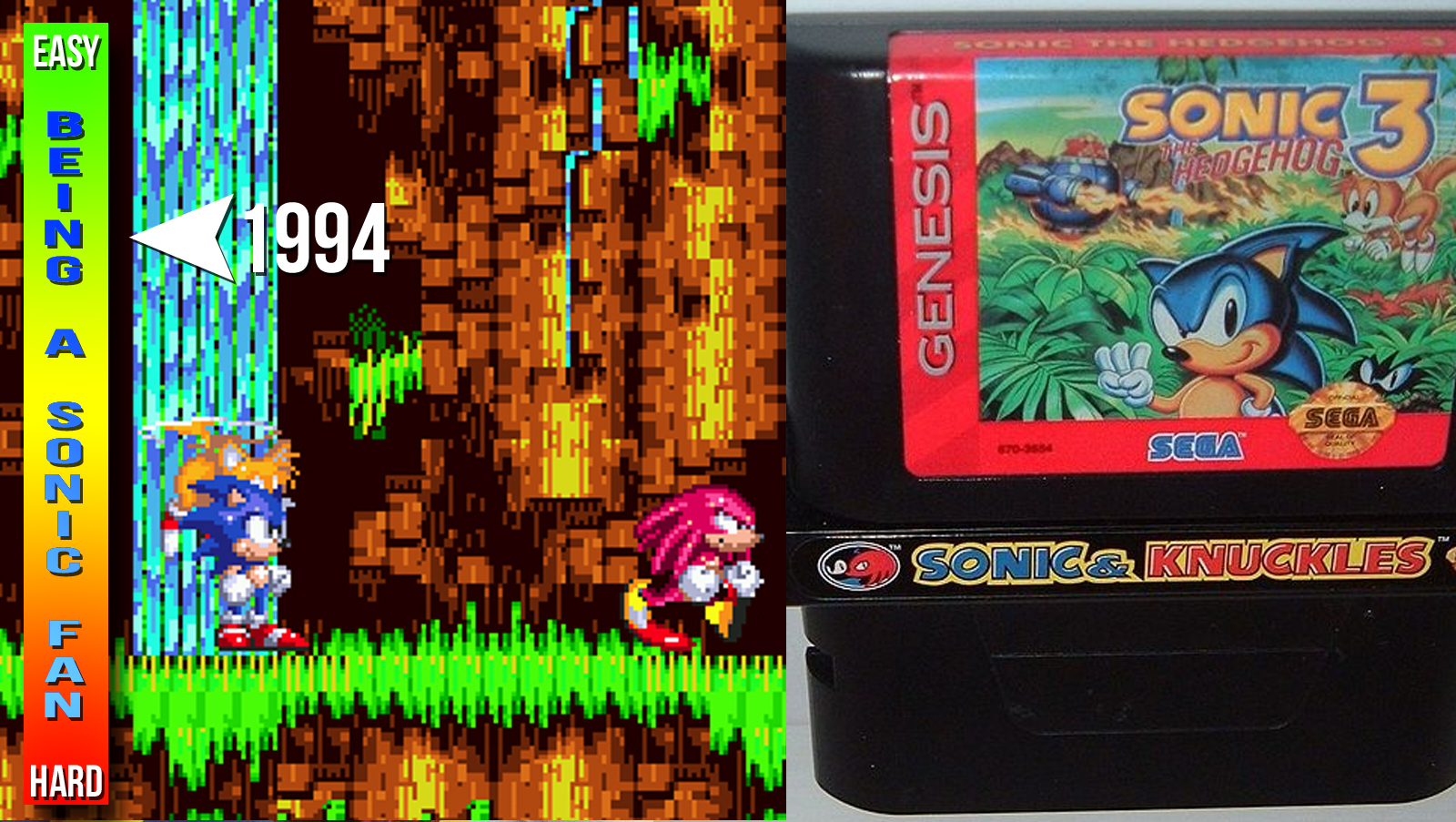
Things weren't quite so rosy for Sonic in 1994. Sonic 3 was released, with a new game engine that made the 16-bit Mega Drive/Genesis hardware purr. The standout levels, Angel Island, Hydrocity and Ice Cap offered some of the finest sights and sounds of the generation. But it wasn't the game Sonic 3 was intended to be, resulting in Sonic & Knuckles appearing later the same year, apparently offering more of the same, only smaller and with a strange 'bolt-on' feature to physically join it to Sonic 3.
People were complaining that Sonic was now just rehashing the same formula without really moving forward. SNES was picking up pace in the console wars and playground arguments were getting harder to win. And Game Gear's Sonic Triple Trouble was pushing the handheld hardware ever further, but starting to suffer badly from style over substance. Sega needed a true next-gen Sonic. And so did his fans.
1995
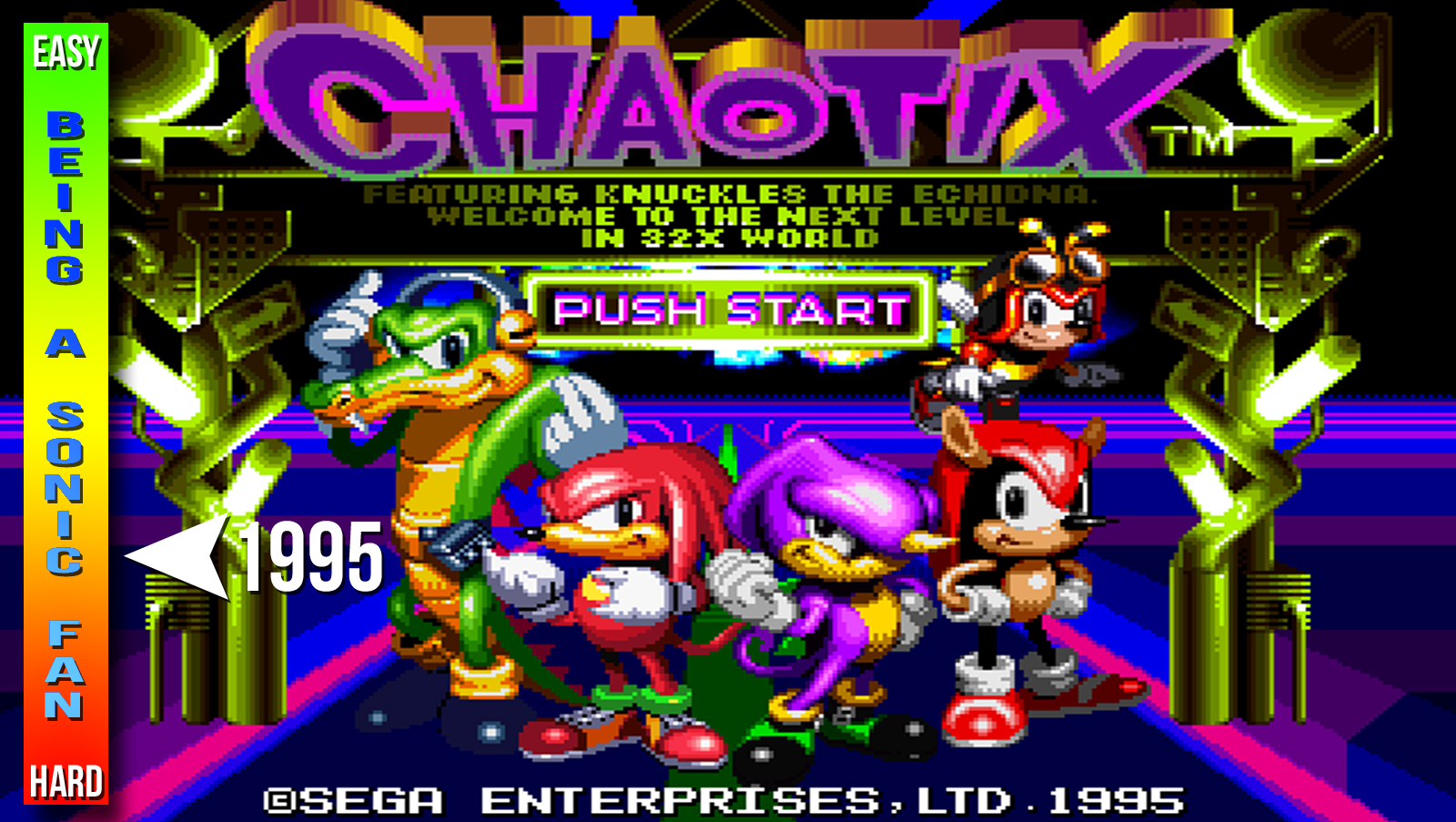
"Where's Sonic?!" That's what every Sonic fan thought when they laid eyes on Knuckles' Chaotix for 32X. It was a Sonic game without Sonic in it, although looking at the character designs, that fella on the right is surely Sonic in an Armadillo suit. The mechanics of the game were strange, with a bizarre link between two characters... It looked like Sega didn't know what to do with their mascot. Or, worse still, that they were retiring him.
The hope, of course, was that Sonic would make his triumphant return on Sega's then-next-generation hardware, the Sega Saturn. But the console was launched sooner than expected to everyone's surprise, and--crucially--without Sonic on day 1. Oh, but he was coming. Yes, he was coming. Sonic X-Treme was being developed for Saturn and that was going to change everything...
1996
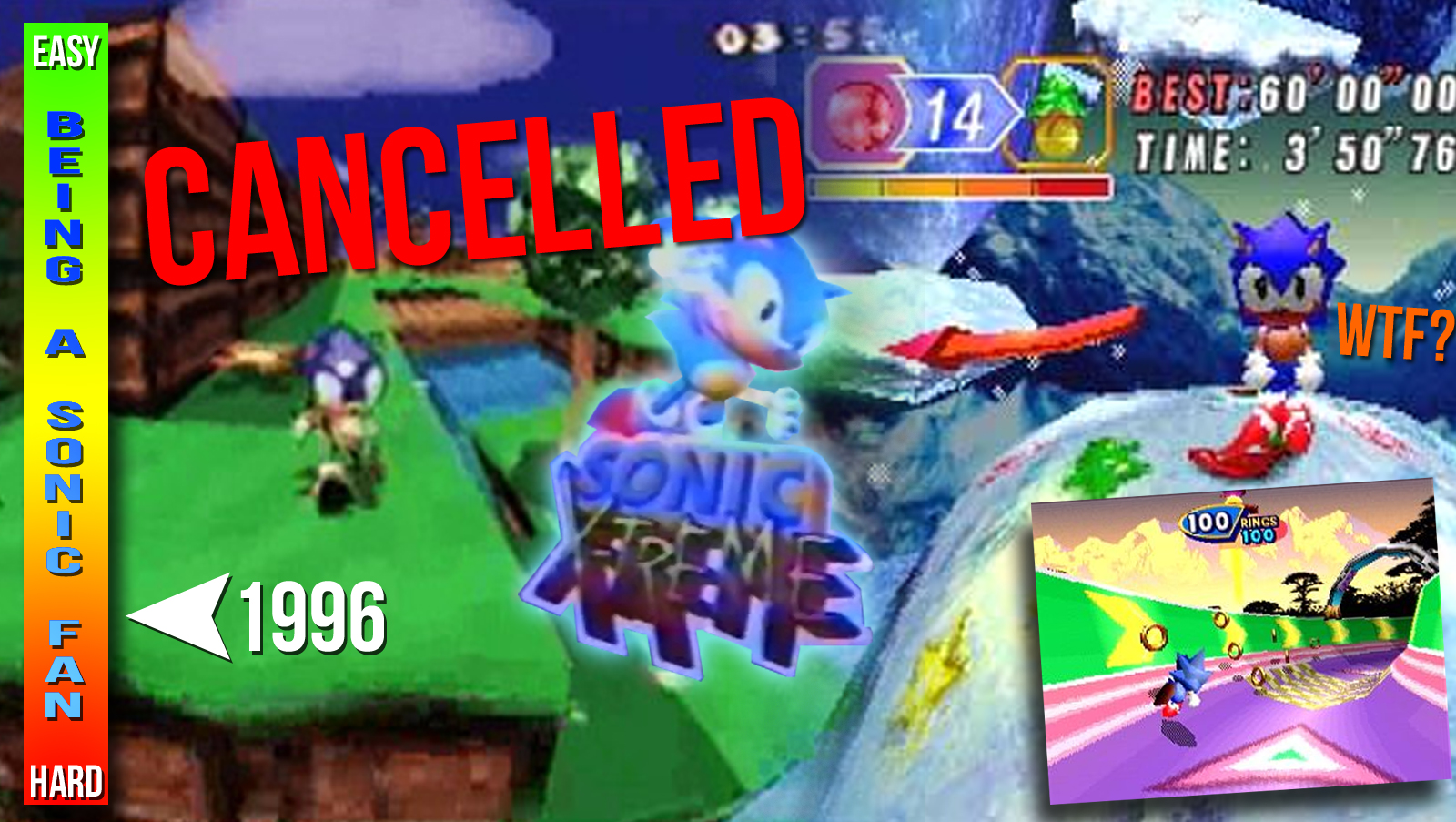
The worst thing that could possibly have happened? It happened. Sonic X-Treme was canned. We've covered that story before, but the net result was a next-gen Sega machine with no next-gen Sonic. At least Sonic Team was still delivering the goods, releasing NiGHTS into Dreams in time for Christmas.
Perhaps realising it needed to sweeten Sonic fans, select games that Christmas came with a bonus CD-ROM, entitled 'Christmas NiGHTS into Dreams'. One of the finest games of all time in its own right, despite basically being a demo for the full game, Christmas NiGHTS features Sonic's first 3D appearance. And, as you can see from the picture, it was dreadful. Running around like a broken toy, Sonic into Dreams was a shocker. At least the Robotnik/Puffy crossover battle was great. But still, NiGHTS had to take over as the Sonic Team product to champion in the console wars. Because nobody could feasibly pretend Sonic 3D's rushed Saturn port was worth playing, except perhaps for the Sonic Team-programmed special stages. Indeed, I didn't even buy it, which says a lot.
1997
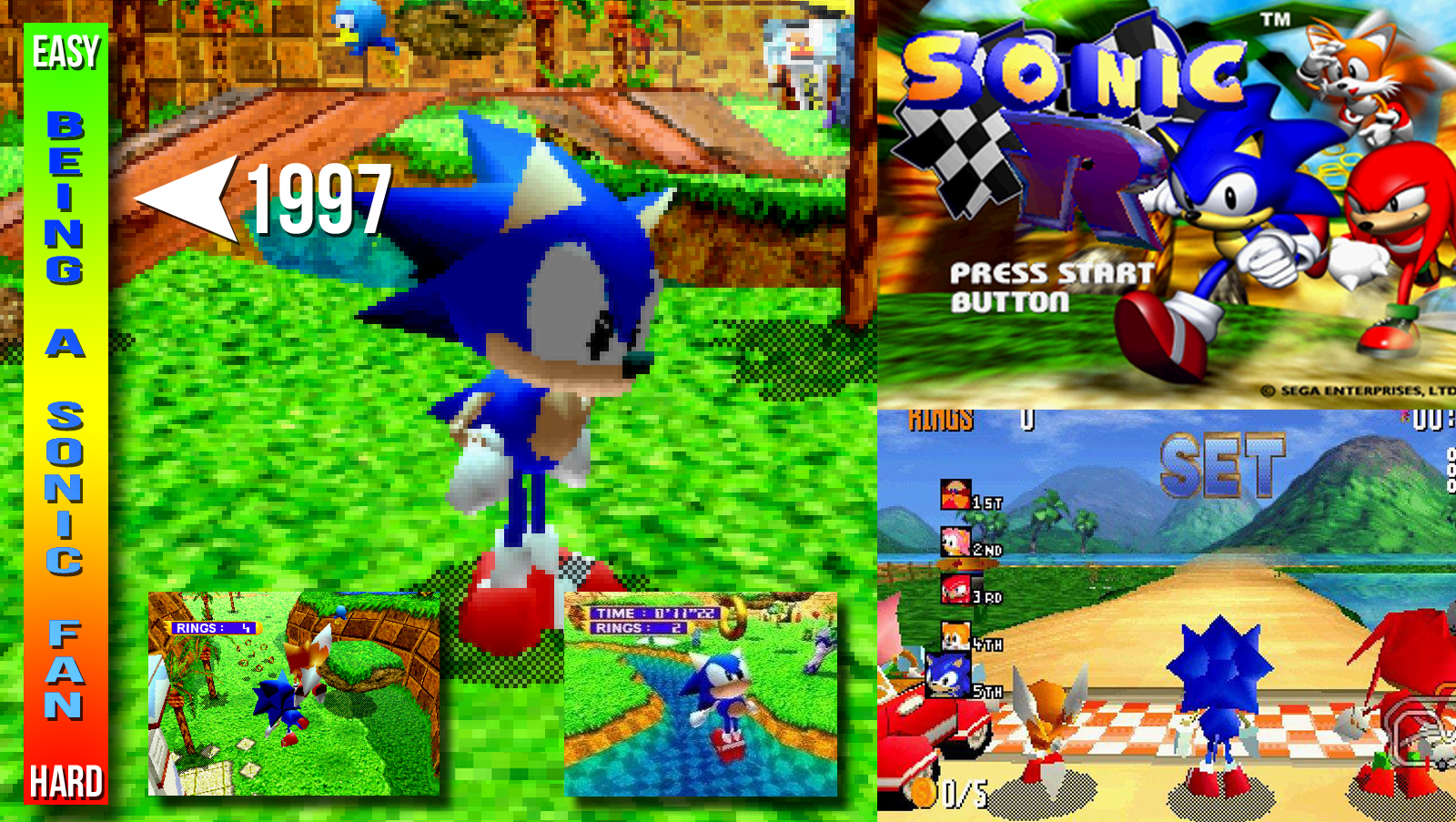
Another year without a proper Sonic game, but at least Sonic fans had a two great titles to champion. Sonic R was incredible for the time, providing transparency effects supposedly impossible on the Saturn hardware. It was so solid-looking, it could have passed for an N64 game, which at the time was something pretty special to boast about.
But even so, it was Sonic Jam that really got everyone excited. Acting as Sonic Team's first experiment towards how Sonic might work in 3D, the Sonic World section of this impressive retro collection featured true 3D Sonic gameplay. Sonic Adventure would begin development for Saturn based on this engine, but later move to Dreamcast. Not that we knew that. Suffice to say, Sonic's future looked bright once again. This was awesome.
1998
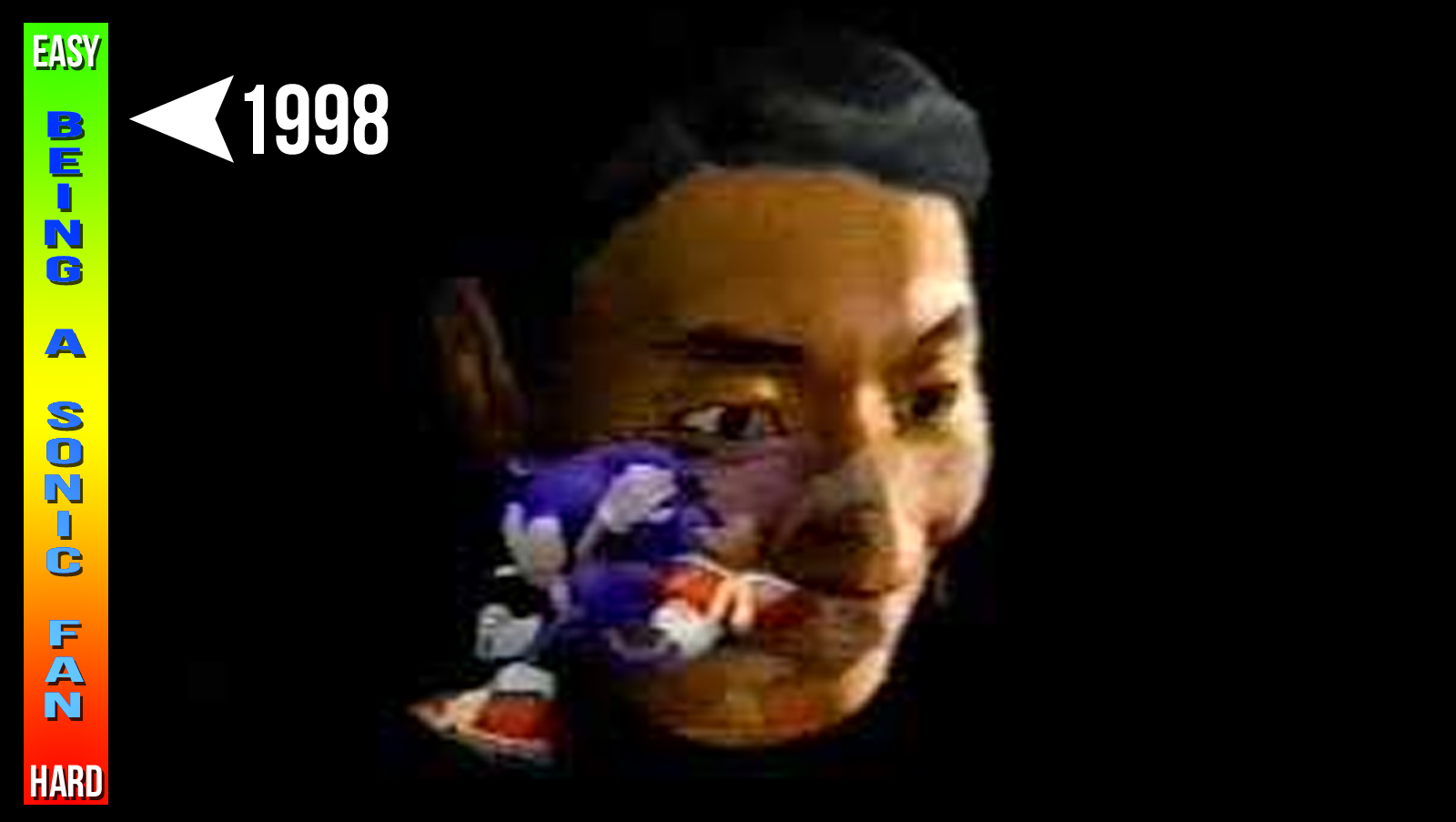
Dreamcast became a reality in 1998, launching in Japan. But when you're a mere 16 years old, it's not advisable to import a new console, especially when you're consigning yourself to years of imports for region-locked hardware. So while Japanese gamers were actually playing Sonic Adventure, Western fans had to look at pictures, videos and release dates.
The image up there was the first glimpse anyone had of Sonic running on the new hardware. The 'Iri-san demo' was a tech display for the Dreamcast's special effects, and featured a fantastic-looking 3D Sonic running around Irimajiri's head. I distinctly remember getting what was game-online.com (now CVG) blocked on my college IT network for downloading a massive 12MB file. It took all of lunchtime and still wasn't done. But I could see the killer whale sequence. Oh my god, the killer whale. Yes, even better than a chocodile. The future looked amazing, and it was all about Sonic.
1999
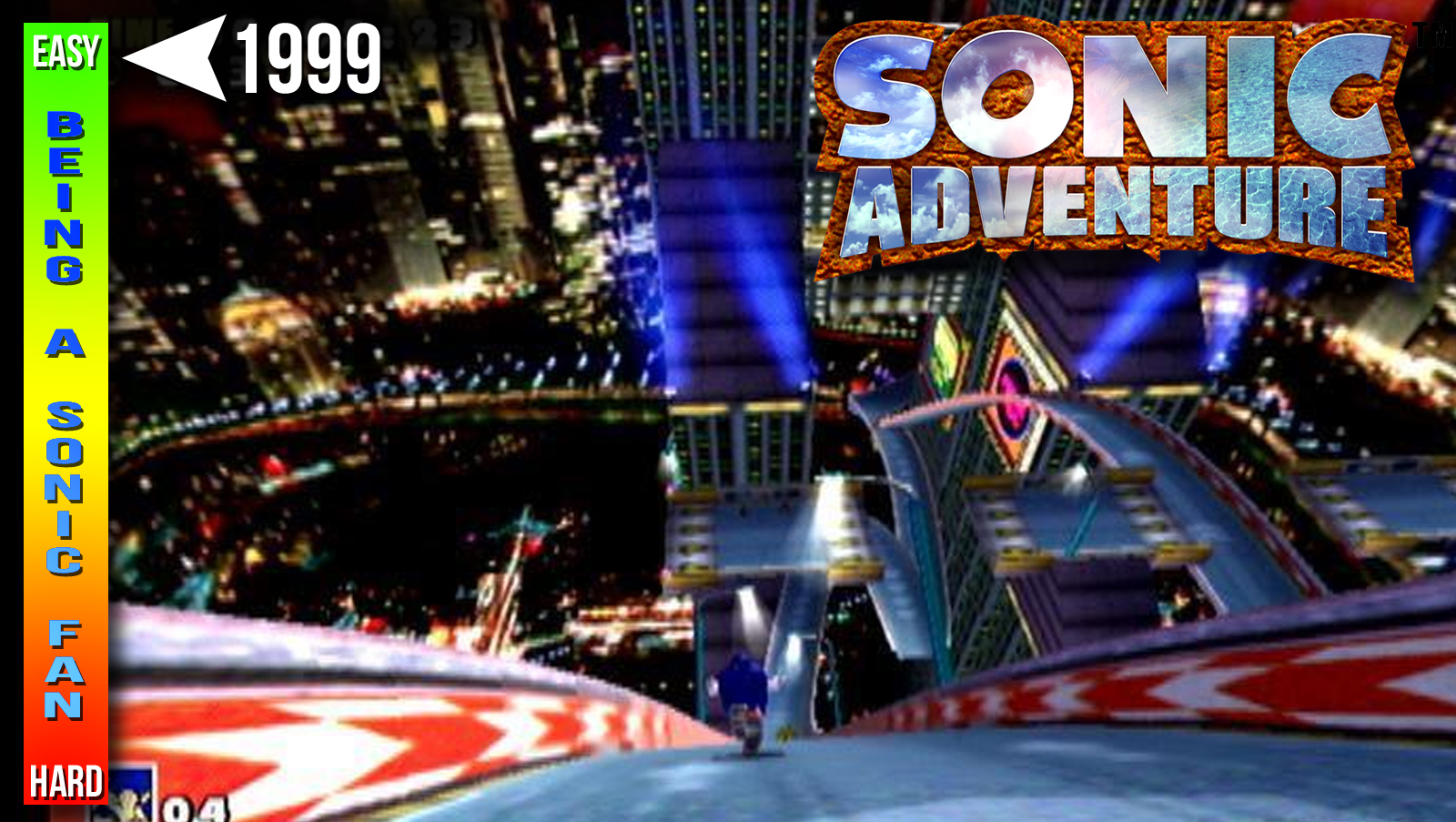
After a two-week delay in Europe, It was November by the time Dreamcast launched. I attended the midnight launch event in my local GAME store, bringing home my beautiful new Dreamcast and loading up Sonic Adventure. It was sensational. As the official Dreamcast Magazine UK said at the time: "One day, all games will look this good. Right now, only this does." They were absolutely right.
Suddenly being a Sonic fan was incredibly easy again. Sure, the game had bugs from its frantic development cycle, but compared to the competition, Sonic on Dreamcast was literally in a different league. PS2 wasn't even out at this point, meaning the choice was either jaw-dropping visuals like this (above) or something on PlayStation. One.

Justin was a GamesRadar staffer for 10 years but is now a freelancer, musician and videographer. He's big on retro, Sega and racing games (especially retro Sega racing games) and currently also writes for Play Magazine, Traxion.gg, PC Gamer and TopTenReviews, as well as running his own YouTube channel. Having learned to love all platforms equally after Sega left the hardware industry (sniff), his favourite games include Christmas NiGHTS into Dreams, Zelda BotW, Sea of Thieves, Sega Rally Championship and Treasure Island Dizzy.


